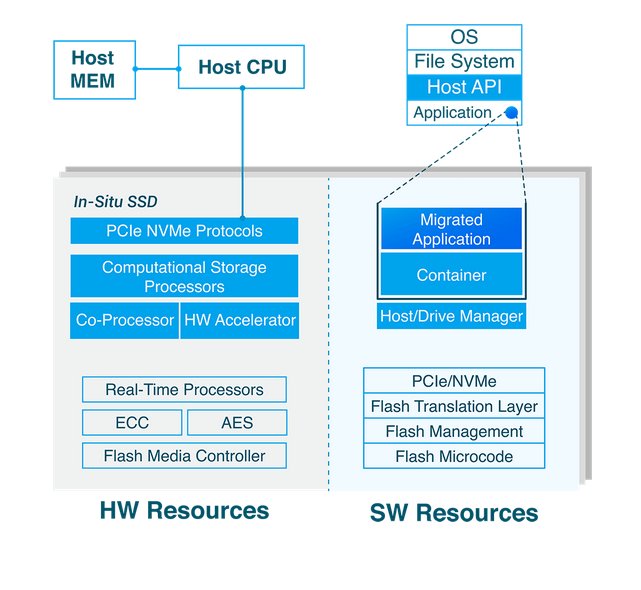NGD Systems has squeezed its computational storage platform into the miniature M.2 form factor, making it possible to embed in a wider variety of hardware.
NGD is targeting applications in edge computing, hyperscale and Open Infrastructure (OCP/Open19) environments.
The Newport M.2 provides high-performance, high-capacity, low-latency processing for edge computing applications that cannot afford a cluster of 1U or 2U servers to do their processing, whether due to size, power, or compute performance, NGD claimed.
Richard Mataya, EVP and co-founder of NGD Systems, said in a statement: “We believe this will fundamentally change the way data is stored and processed at the edge for content delivery networks (CDNs) and hyperscale environments.”
Edging along the M.2
Available today, the Newport M.2 offers 4TB or 8TB of storage in the M.2 22110 form factor – 22mm by 110mm. NGD claims this is twice the capacity of the next largest available M.2 NVMe SSDs, with an average power consumption of less than 1w per TB. The host interface is NVMe 1.3 PCIe Gen 3.0 x4.

The M.2 is the second product in NGD’s Newport Computational Storage Platform. The processor core is embedded into the SSD controller, enabling data processing in situ on the SSD without having to be copied out into the host computer’s memory. The idea is that this speeds up latency-sensitive tasks such as AI and data analytics.
In this case the processor is an ARM Cortex-A53 core running a 64-bit operating system, a version of Ubuntu Linux. This should enable the development of applications that run on the embedded core with minimal changes from code running on an X86 Linux system.
The Newport platform’s programmable computational storage services (P-CSS) allow support for AI and other application workloads, NGD said.

NGD’s first Newport product was a 16TB U.2 NVMe SSD in a standard 2.5in drive form factor, launched in March 2019.







